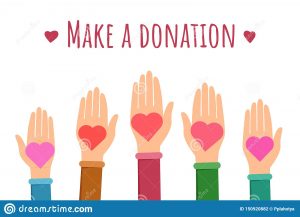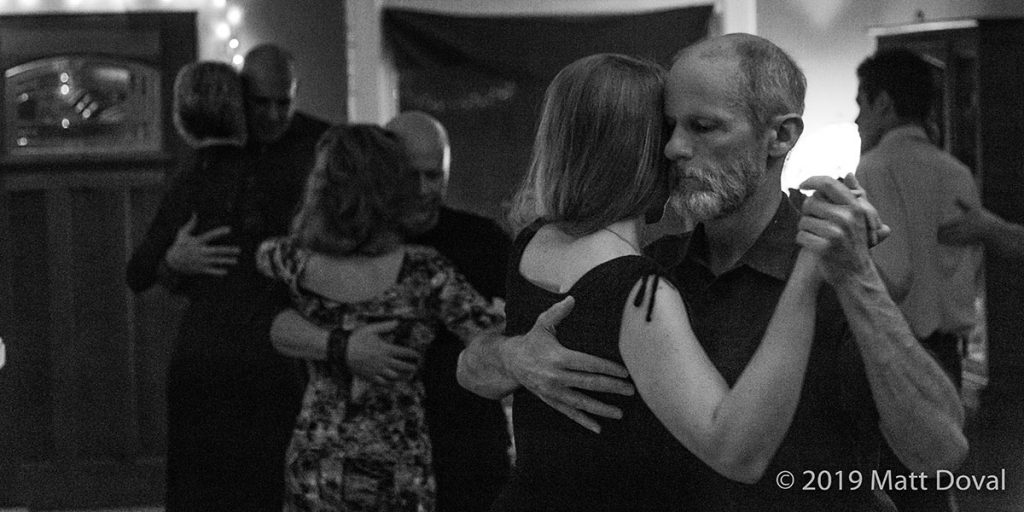Tango?
“Can I do this?”
YES! build yourself from the inside out
Can I Do This!?
Is this your first question? “Can I do this?” …at 50, 60, or 70 or more years, or with a movement disorder like Parkinson’s Disease? You could just say NO! and choose something simple. Or you could take a moment and consider the possibility!
The TangoMind Program
Feeling old and broken!? How did THAT happen!? And does it really matter, to know how? Not really. What matters now is your story moving forward. It’s your story! Write it!
This program is intended for older adults and people with movement disorders. People who will find out, if they don’t already know, that there’s much more they can do!
Consider the value of Argentine Tango. There is overwhelming evidence to indicate that the brain continuously remodels its neural circuitry in order to encode new experiences and enable behavioral change. And failure to use specific brain functions can lead to functional atrophy. (%008) Studies show that complex, novel movements are highly beneficial to maintaining healthy neuromuscular functioning. (&016) Argentine tango integrates wide ranging functional systems throughout the brain and body. And it is proven in peer-reviewed research to benefit neuromuscular functioning in people with Parkinson’s Disease. (&007, &009, &010, &011, &019) Among these benefits are improvements to
- balance, gait, and posture,
- memory, cognitive powers,
- and emotional and mental health, including reducing symptoms of depression.
Consider why: Argentine Tango blends
- movement,
- musical experience,
- partner coordination and connection,
- multi-sensory stimulation,
- motor learning,
- emotional perception, expression and interaction,
- spacial awareness,
- authenticity,
- and much more
making it a rich social experience that will challenge and change you from the inside out. Understanding how Argentine tango engages and changes your physiology is NOT required. A person need only show up and start moving to kick all of the internal systems into gear.
Can you see yourself getting hooked on dance?
Especially considering the value of an activity that includes, at all levels, the recommended four components of exercise for people with PD (&014) :
- cueing strategies to improve gait,
- cognitive movement strategies to improve transfers,
- balance improvement exercises, and
- training of joint mobility and muscle power to improve physical capacity.
Tango is a life-practice for individuals connected within a community.
The research says you can do it!
Reframe your understanding
This is a dance which goes beyond the usual exercise class. It is an ever-growing skill-set, embodied and carried forward year after year. It is a gateway to confidence, to self-efficacy, to being present in your body, connected within community, and to a pattern of intentional accomplishment.
If Tango had to be defined...
Argentine Tango is a partnered social dance that developed over the last century in Argentina’s capital city, Buenos Aires. It is very different from the Tango in International and American Ballroom Dancing in its embrace, posture, movement and intent. Social tango is improvised, with every step being a spontaneous discovery in the moment, as the partners focus on their connections to each other and to the music. Tango isn’t the steps but the manner in which the steps are danced. The connection between partners is not so much a result of anything in the dance as it is a requirement to dance successfully. In order to dance with every step spontaneously improvised, both partners must be paying full attention to each other.
And, more than any other partner dance, Tango is a conversation, a rich movement language with creativity, musical play, and emotion.

But can I do this?! How could a person who struggles with movement dance Tango?
Would you believe that in Argentine tango “simple” is highly valued? Refinements of basic everyday movements of walking forward and backward, of turning and side stepping, and of weight shifts ARE the building blocks of this wonderful social dance. And from these simple fundamentals we learn how “manner of movement” wins out over “quantity of dance-moves” and how human connection is cultivated and egoic mind-chatter is released. The value of Argentine Tango is in the time spent learning. The first lesson is embracing uncertainty-as-opportunity and using your heart as guide. Then it’s just a matter of time for the physical changes to kick in.
Still not convinced? Read on about how focusing on a small part of a great thing, a microcosm, can bring greater understanding of the whole without being overwhelmed.
Subscribe to TangoMind
Top Posts


Sign Up for the 4 week introduction to TangoMind Fundamentals for older adults and people with movement disorders.
Special price! Pay what you can. The suggested cost is $11 per class per person, $22 with a partner.
Microcosm
"a community, place, or situation regarded as encapsulating in miniature the characteristic qualities or features of something much larger."
Oxford Dictionary
Why does learning from the microcosm of a large subject work better? Well, using Argentine Tango as an example, there are at least five interdependent experience levels that blend together to make the rich masterwork of tango.
These levels are often described as connections, with one’s inner awareness being the common element. At the core, tango is about the heartfelt tension held between the five connections:
- with self (mind/body),
- with partner,
- with music,
- with the floor/movement,
- with the community.
Learning from the microcosm is a way to experience the richness of tango much earlier. It makes each lesson after the basics a much better experience.
Wedding weekend itinerary
Rehearsal
Date
December 17, 2019

Schedule
From 18:00 PM

Venue
3355, Wayside Lane, nakland, CA 94601
Ceremony
Date
December 18, 2019

Schedule
From 14:00 PM

Venue
3355, Wayside Lane, nakland, CA 94601
Brunch
Date
December 19, 2019

Schedule
From 10:00 AM

Venue
3355, Wayside Lane, nakland, CA 94601



